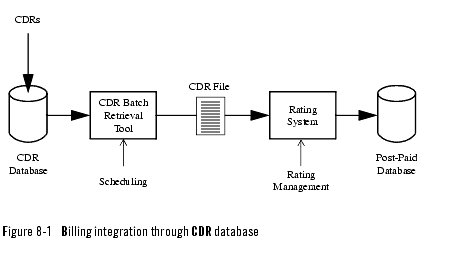Product Description
|
|
Get Adobe Reader |
Charging
The following sections describe WebLogic Network Gatekeeper charging functionality:
- Overview
- CDR based charging
- Content based charging and accounting
- Revenue sharing
- Billing system integration
Overview
The WebLogic Network Gatekeeper makes it possible to tailor the type of charging to be used for each application using service capabilities through the WebLogic Network Gatekeeper. An application can use one or more of the following charging alternatives:
- Charging based on time period or used amount (CDR based charging)
- Charging based on the content or value of the used service
The CDR data can be stored in the WebLogic Network Gatekeeper's internal charging database or retrieved in real-time by billing and post processing systems through a billing gateway. Both pre-paid and post-paid accounts are supported.
CDR based charging
CDRs are used for charging based on time period or used amount. Charging based on time period is typically used to charge for calls. Amount can be used, for example to charge for a positioning service.
Data generation
Charging data is generated every time an application uses service capabilities through a service capability module. The charging data is recorded by the service capability module while the application interacts with the network. When the interaction is closed, the service capability module stores the charging data as a CDR in the database. One storage of data in the database represents a charging transaction. (If integrated with a billing gateway, the charging data is sent directly to the billing gateway.)
In the database, all CDRs are stored in the same table. Different service capability modules produce different kinds of charging data. Therefore, some of the fields in the charging table are optional and others may contain different types of data depending on the service capability module. General descriptions of the fields in the charging table are provided in Table 8-1 on page 3. The service capability module specific charging data descriptions are provided in Charging Data.
The CDRs can also be used to create extensive service usage statistics.
Content based charging and accounting
Content or value based charging makes it is possible to charge a user or subscriber based on the value of a used service rather than the amount or time used. This can be used, for example when down loading music video clips or in m-commerce applications. Both pre-paid and post-paid end-user accounts are supported.
Revenue sharing
Revenue sharing means that part of the revenues generated by an application can be shunted back to the service provider. The actual percentage is specified in the CDR.
For pre-paid accounts, settlement can be handled in real-time by the charging service or near real-time through a billing gateway.
For post-paid accounts, settlement is handled by CDRs and post processing systems.
Billing system integration
CDR database
Integration through the CDR database is suitable when the applications connected to an WebLogic Network Gatekeeper use post-paid accounts.
When integrating through the CDR database, a CDR batch retrieval tool retrieves the CDRs from the database and stores them in a file format. The CDR file is processed by a rating system that transforms the CDR to billing information and stores it in a post-paid accounts database. The flow is shown in Figure 8-1, Billing integration through CDR database, on page 8-5.
Billing gateway and other similar
Integration through a billing gateway supports real-time settlement of pre-paid account as well as storing billing information in a post-paid database.
When integrating through a billing gateway, the billing gateway retrieves the CDRs in real-time through a CORBA based charging listener. Rating, rating management, billing information storage, and pre-paid accounts settlement are handled by the billing gateway. The flow is shown in Figure 8-2, Billing integration through billing gateway, on page 8-6.
Charging plug-in
Applications using the charging service capability module need to have a connection with an accounts database. The integration between the charging service capability module and the database is made through a customized plug-in. The plug-in is developed to fit the characteristics of the accounts database. With this solution, both pre-paid and post-paid accounts can be handled. For example, it can be verified before a call is set up that there is money are on a pre-paid account.
The flow is shown in Figure 8-3, Billing integration through a charging plug-in, on page 8-7.


